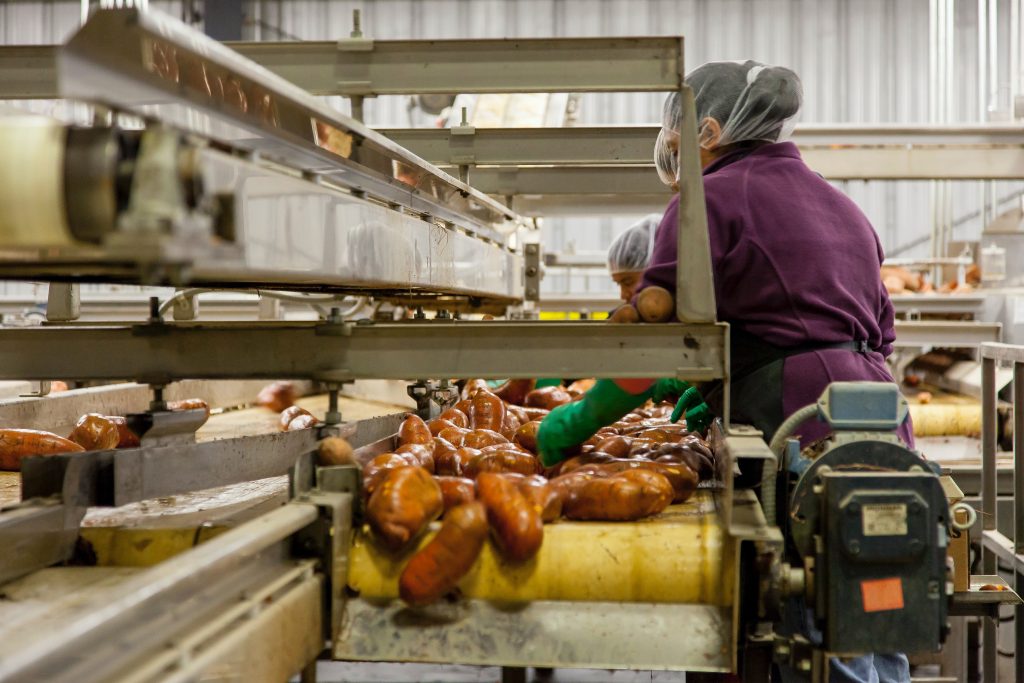We discussed economic activities and its first type- the primary activities, earlier. The activity which generates revenue is an economic activity, if the activity involves human interaction with the elements of the environment (animal or plant), it falls under the category of primary activity.
Secondary activity, on the other hand, adds value to the natural resources by turning raw materials into material goods. Let us now see what comes under secondary economic activities:
Manufacturing
Manufacturing is the process of mass production of goods from raw materials in industries using heavy machinery. Emphasis is on the use of technology to increase production and improve quality.


Characteristics of Modern Large Scale Manufacturing
- Specialisation of Skills: The requirement of certain skills varies depending on the industry. There are certain industries which produce in “special order” while others manufacture for wholesale. The first one requires skills specific to the product, the machine and technology applied becomes a secondary factor. In the latter, however, an efficient team of workers is required to keep the manufacturing chain running.
- Mechanisation: For precision, consistency and increased efficiency automation of time-taking tasks in an industry is essential for its growth and popularity.
- Technological Innovation: The Research and Development department of manufacturing units work in collaboration to reduce the capital investment with increase in profit, in an ideal condition. Although, this is easier said and done. The main aim of technological innovation is to eliminate inefficient methods of working.
- Organisational Structure and Stratification: To get profits, any industry in all its stages of development requires proper management, distribution of tasks, good capital investment, executive bureaucracy, etc. This keeps in check the efficiency of an industry.
- Uneven Geographic Distribution: On the basis of access to market, other industries, supply of manual and skilled labour, energy source, etc the manufacturing units are distributed unevenly globally.


Classification of manufacturing industries is done on the basis of their size, inputs, ownership, etc:
Household Industries or Cottage Manufacturing
These are small manufacturing units run by local residents or small businessmen. Products are made for local consumption and production is for small-scale consumption. Capital investment and transportation costs do not influence the business much. Fabrics, pottery, bricks, clay, stones, food stuffs, furniture, etc come under the production.
Industries based on Inputs/ Raw Materials
- Agro-Based: Spices, oils, rubber, silk, canning, cream production or any product whose manufacture is directly dependent on the crop cultivation and harvest is part of the agro-industry. Food processing is a major part of this industry.
- Mineral Based: These industries make finished goods from raw mineral ores of metals like iron, copper, aluminium, etc. Cement making and pottery also come under mineral-based industries.
- Chemical Bases: Petroleum products, cosmetics, detergents, soaps, laboratory products, synthetic fibers, polymers, paints, etc are a product of chemical industries.
- Forest based Industries: These industries usually manufacture furniture, bamboo, paper, etc. These are dependent on forest for their raw material, hence are called forest-based industries.
- Animal based Industries: These industries produce leather products, textiles made of wool or products of ivory.


Industries Based on Output/ Product:
Iron and steel industry is termed as basic industry. This is because any kind of tools or machines used by any other industry requires them to be made out of metals such as iron, aluminium, copper, etc. This is in itself an industry forming the basis of other industries apart from the raw material required. Non-basic industries are those whose output depends on availability of raw material, availability of tools and machinery - most of which comes from products of the basic industries.
Industries Based on Ownership
On the basis of owner rights, an industry can be Public Sector (owned and managed by the government), Private Sector(owned by individual investors, private organisations) or Joint Sector (owned partially by the government and private organisation).
Basically, secondary activities are based on manual labor, skill and depend heavily on raw material which differ from one industry to another. The main aim is to derive profit and they are not carried out to only cover the bare minimum needs of food, cloth and shelter. They provide the employee and the employer to improve his/ her financial, social status by improving his/ her standard of living.






